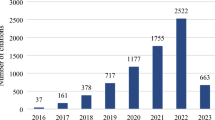Abstract
In the present work, an attempt has been made to solve the correlated multiple criteria optimization problem of submerged arc welding. The target was to search an optimal process environment, capable of producing desired bead geometry parameters of the weldment. Four correlated features of bead geometry: depth of penetration, reinforcement, bead width, and percentage dilution have been selected in the study. The process environment has been assumed consisting of four variables like voltage (OCV), wire feed rate, traverse speed, and electrode stick-out. Multiple correlated responses have been converted into independent quality indices called principal components. Principal component analysis (PCA) has been adapted to covert multiple objectives of the optimization problem into a single objective function. This single objective function has been denoted as composite principal component. Taguchi’s robust optimization technique has been applied to determine the optimal setting, which can maximize the composite principal component. Result of this aforesaid optimization technique has been compared to that of grey-Taguchi technique; another approach which is widely used for solving multicriteria optimization problems. A confirmatory test showed satisfactory result. This concludes application feasibility of PCA-based hybrid Taguchi method for parametric optimization of SA weld.
Similar content being viewed by others
References
Antony J, Antony F (2001) Teaching the Taguchi method to industrial engineers. Work Study 50(4):141–149
Asiabanpour B, Palmer K, Khoshnevis B (2004) An experimental study of surface quality and dimensional accuracy for selective inhibition of sintering. Rapid Prototyping J 10(3):181–192
Correia DS, Gonçalves CV, Sebastião SC Jr., Ferraresi VA (2004) GMAW welding optimization using genetic algorithms. J Braz Soc Mech Sci Eng 26:28–33
Jeyapaul R, Shahabudeen P, Krishnaiah K (2005) Quality management research by considering multi-response problems in the Taguchi method—a review. Int J Adv Manuf Technol 26:1331–1337
Kim D, Rhee S, Park H (2002) Modeling and optimization of a GMA welding process by genetic algorithm and response surface methodology. Int J Prod Res 40(7):1699–1711
Kim D, Rhee S (2003) Optimization of GMA welding process using the dual response approach. Int J Prod Res 41(18):4505–4515
Kim D, Rhee S (2004) Optimization of gas meal arc welding process using the desirability function and the genetic algorithm. Proc Inst Mech Eng, B J. Eng Manuf 218(1):35–41
Kim D, Kang M, Rhee S (2005) Determination of Optimal Welding Conditions with a Controlled Random Search Procedure”, Welding Journal, pp. 125s–129s, August
Maghsoodloo S, Ozdemir G, Jordan V, Huang C-H (2004) Strengths and limitations of Taguchi’s contributions to quality, manufacturing, and process engineering. J Manuf Syst 23(2):73–126
Murugan N, Gunaraj V (2005) Prediction and control of weld bead geometry and shape relationships in submerged arc welding of pipes. J Mater Process Technol 168:478–487
Price WL (1977) A controlled random search procedure for global optimization. The Computer Journal 20(4):367–370
Rowlands H, Antony J, Knowles G (2000) An application of experimental design for process optimization. TQM Mag 12(2):78–83
Sathiya P, Aravindan S, Noorul Haq A (2004) Friction Welding of Austenitic Stainless Steel and Optimization of Weld Quality. Proceedings of International Symposium of Research Students on Materials Science and Engineering, December 20–22, Chennai, India.
Tarng YS, Yang WH, Juang SC (2000) The use of Fuzzy logic in the Taguchi method for the optimization of the submerged arc welding process. Int J Adv Manuf Technol 16:688–694 July
Tarng YS, Juang SC, Chang CH (2002) The use of grey-based Taguchi methods to determine submerged arc welding process parameters in hardfacing. J Mater Process Technol 128:1–6
Tsai J-T, Liu T-K, Chou J-H (2004) Hybrid Taguchi–genetic algorithm for global numerical optimization. Evolutionary Computation, IEEE Transactions 8(4):365–377
Unal R, Dean, EB (1991) Taguchi Approach to Design Optimization for Quality and Cost: An Overview. Presented at the Annual Conference of the International Society of Parametric Analysis”.
Wu F-C (2005) Optimization of correlated multiple quality characteristics using desirability function. Qual Eng 17(1):119–126
Wang J-T, Jean M-D (2006) Optimization of cobalt-based hardfacing in carbon steel using the Fuzzy analysis for the robust design. Int J Adv Manuf Technol 28:909–918
Nadkarni SV (1988) Analysis of Welded Structure. Oxford & IBH Co. Pvt. Ltd.
Welding Handbook, Seventh Edition, Volume 2, Welding Process—Arc and Gas Welding and Cutting, Brazing and Soldering, W. H. Kearns, Editor, AWS, 2501 Northwest 7th Street, Miami, Florida 33125.
Johnson, Richard, A. and Wichern, Dean, W., “Applied Multivariate Statistical Analysis”, Prentice-Hall, Inc., Englewood Cliffs, New Jersey 07632.
MINITAB (Release 13.1) State College, PA, USA. User manual.
Author information
Authors and Affiliations
Corresponding author
Rights and permissions
About this article
Cite this article
Datta, S., Nandi, G., Bandyopadhyay, A. et al. Application of PCA-based hybrid Taguchi method for correlated multicriteria optimization of submerged arc weld: a case study. Int J Adv Manuf Technol 45, 276–286 (2009). https://doi.org/10.1007/s00170-009-1976-0
Received:
Accepted:
Published:
Issue Date:
DOI: https://doi.org/10.1007/s00170-009-1976-0




